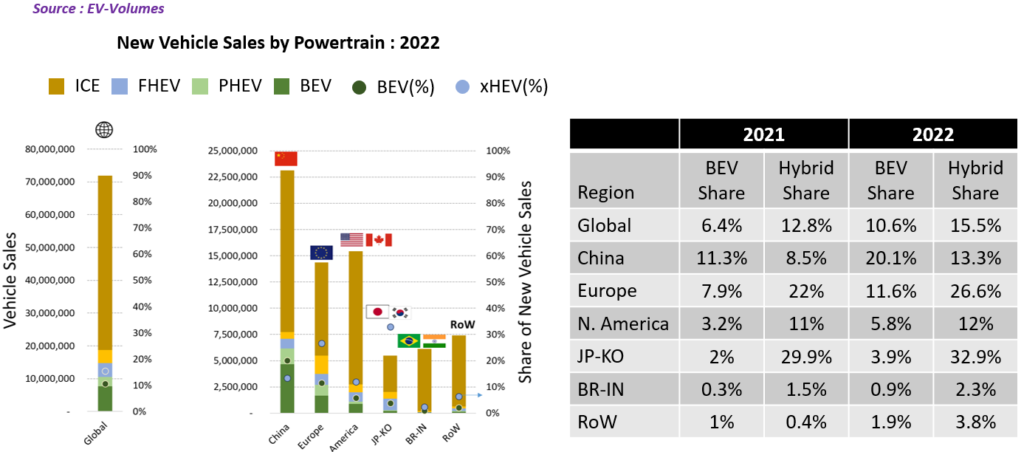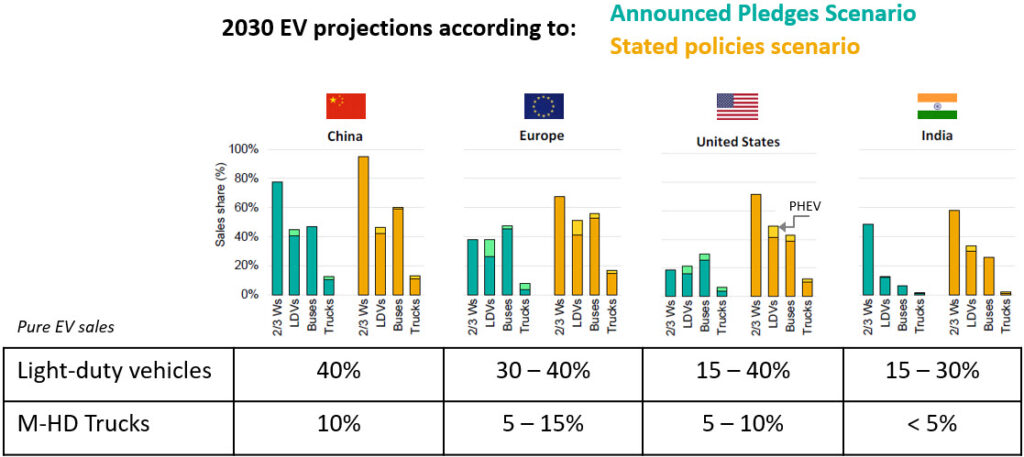
Hydrogen Fuel Cell Trucks
![]()
An updated summary of available hydrogen fuel cell electric trucks and buses, their announced range and hydrogen capacity.

![]()
An updated summary of available hydrogen fuel cell electric trucks and buses, their announced range and hydrogen capacity.

![]()
A summary of CARB’s latest Advanced Clean Fleets proposal for heavy-duty truck electrification as discussed in the February 2023 Workshop.

![]()
A deeper look into India’s recent finding of new Lithium resources, the meaning of “inferred” and an estimate of the impact on electrification for Indian transport.

![]()
A summary of 2022 light-duty vehicle sales globally and by region, and split by powertrains.

![]()
In case you are confused by the Inflation Reduction Act in the US and it’s implications for electric vehicle incentives, then you are not alone. It’s an evolving story, and the U.S. Treasury Department is making clarifications to help consumers understand what’s in it for them. The latest revised guidelines expand the list of vehicles which qualify for the $7,500 tax credits. Here’s a summary.

![]()
A summary of Benchmark Minerals Cathodes 2022 conference.

![]()
The EU Commission has proposed Euro 7 / VII emission standards for light- and heavy-duty vehicles. Here is a quick tabular summary.

![]()
Around 40% of the US now follows California’s tougher-than-federal criteria pollutant standards. Here’s a summary of the latest, including followers of the Advanced Clean Cars rule.

![]()
What’s better than a long-term EV outlook? Two outlooks, both published in the same month. Here’s a quick comparison of some of the important aspects pertinent to the rate of electric vehicle uptake.

![]()
Highlights from the International Energy Agency (IEA) annual outlook on electric vehicles, and the associated view on the batteries and infrastructure needed to 2030.